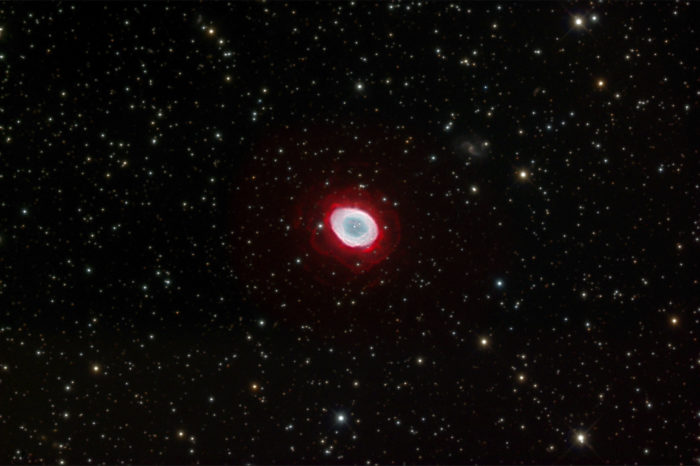Ring
This planetary nebula in Lyra is about 2,300 light years away (it is difficult to determine the distance). Also known as M57. The central star is about magnitude 15, and is a white dwarf which shed layers of gasses in one of the last phases of its life to create the nebula we see. The ring nebula was discovered in 1779, the central star was first seen in 1800. The nebula was created 6,000 to 8,000 years ago, and the size has been increasing slowly ever since as the gasses expand out into space.
The nice spiral galaxy at the upper right of the Ring Nebula is IC1296. This galaxy is about 221 million light years away. There are 7 other galaxies visible in the full larger image, they are all tiny smudges. A couple of the super tiny galaxies are magnitude 18, the others don’t have a listed magnitude.
This is the first official image with the new telescope! An AG Optical Systems 14.5″ iDK with carbon fiber tube.
I added 8 hours of exposure time with the Ha filter (32 fifteen minute subexposures) to capture the red layers around the nebula. This was hydrogen that got blown off the star before the main ring part was blown off. Keep in mind, this red layer is very dim, and has been processed to be more visible in this image. All astronomy images are processed like this, to enhance contrast and brighten the very dim parts of the image (which are usually the parts of interest).
I also used Russell Croman’s StarShrink PhotoShop plugin for the first time on this image. This helps return the stars to more of a pinpoint, and less of a fuzzy bloated star. The stars get fuzzy and bloated from the Earth’s atmosphere moving around.
